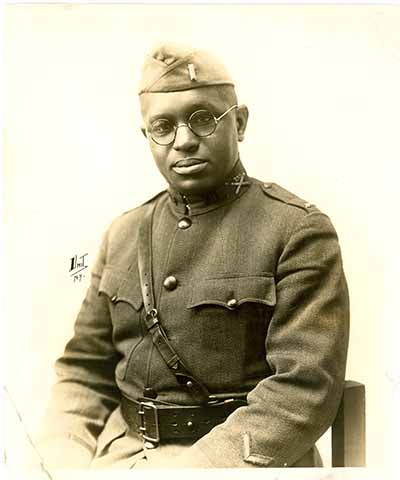The Great War and Global Change
What were some of the key components shaping African American life in NC in the early twentieth century?
The beginning of the twentieth century is often referred to as the nadir of U.S. race relations. The nadir refers to the lowest point in a person or organization's existence. Many historians use nadir to describe the worst period in African American history. Some identify this period as the end of the 1800s through the early 1900s. For African Americans, this was a period of intense racial violence and few opportunities for economic and educational security.
In the rural South, many African Americans were tenant farmers and sharecroppers. It was common for landowners to refuse to give African Americans an equal part of the profits earned from the crops they harvested. Individuals and families began migrating to cities for better economic opportunities. In North Carolina, this looked like African Americans relocating from rural parts of the state. Some people moved to cities like Durham to work in tobacco factories. Although there was still economic inequality there was the hope of better prospects.
However, the country and the world changed in 1914. On July 28th World War I, also known as the Great War, started. For the first two years, the United States pledged to remain neutral. In the early part of 1917, President Woodrow Wilson asked congress to declare war on Germany. He cited Germany's military activity in the Atlantic ocean and the destruction of U.S. ships. On April 6, 1917, the U.S. officially entered the war.
What were some of the ways African Americans contributed to the war effort at home and abroad? What conditions did African Americans return home to in the United States?
African Americans contributed to the war efforts in many ways at home and abroad. There were over 380,000 African American soldiers in the entire U.S. military. A quarter, or 25%, of the 86,000 North Carolinians who served in World War I were African Americans. They fought in segregated troops and dealt with prejudice within the Army. For some this included having to do labor duties like cleaning up after other soldiers. White officers discriminated against and hurled racial slurs African American soldiers.
At home, African Americans made significant economic contributions to The Great War. Many individuals and families purchased war bonds to support the military effort. African Americans also provided crucial labor in factories. African Americans working in tobacco factories kept North Carolina's main industry operational.
The war ended on November 11, 1918, what is now called Armistice Day. African Americans likely expected to return home to a more equal society. Some may have believed that their sacrifices in the war would guarantee more citizenship rights than before. Instead, they found increased racial tensions when they returned to the United States. African Americans remained disenfranchised and unable to take part in political processes. The African American community endured segregation and the threat of racial violence.
World War I was a significant turning point in modern global history. There was great loss of life and the war reordered global politics. For African Americans, the end of the war showed the limits of democracy in the United States. African Americans did not accept the continued abuse and dehumanization. The injustice inspired the next wave of the African American freedom struggle. It led to the birth and development of the New Negro generation. This generation of activists fought for racial equality throughout the 1920s and 1930s. They prioritized economic rights and better paying jobs. They wanted access to better education opportunities. These activists elevated African American culture and worked to stop racial violence.
Concluding questions:
- What protections or privileges do you think should be available to war veterans?
- What can you and your classmates do to honor veterans from past wars?
- How might you all be able to support all veterans today?
References:
Barbeau, Arthur. The Unknown Soldiers: African-American Troops in World War I (Philadelphia: Temple University, 1974).
Du Bois, W.E.B., "Returning Soldier," The Crisis 18 (May 1919) p. 13.
Ellis, Mark. Race, War, and Surveillance: African Americans and the United States Government During World War I (Bloomington: Indiana University Press, 2001).
Lemmon, Sarah McCulloh. North Carolina's Role in the First World War (Raleigh: Division of Archives and History, 1966).
Lentz-Smith, Adriane. Freedom Struggles: African-Americans and World War I (Cambridge: Harvard University Press, 2011).
Peek, Matthew. "North Carolina WWI County Induction Lists Online," North Carolina Department of Natural and Cultural Resources. March 1, 2017. https://www.ncdcr.gov/blog/world-war-i/nc-wwi-induction-lists
Sistrom, Michael. "North Carolinians and the Great War," Documenting the American South. https://docsouth.unc.edu/wwi/homeintro.html#afam. Accessed May 7, 2020.
Vaugh, Dawn B. "Raleigh's first Black soldier to die in WWI was wounded on the day the war ended." The Herald Sun. November 10, 2018. https://www.heraldsun.com/news/local/article221422570.html
Williams, Chad. "African-American Veterans Hoped Their Service in World War I Would Secure Their Rights at Home. It Didn't." Time. November 12, 2018. https://time.com/5450336/african-american-veterans-wwi/
 Lieutenant James Timothy "Tim" Brymn
Lieutenant James Timothy "Tim" Brymn